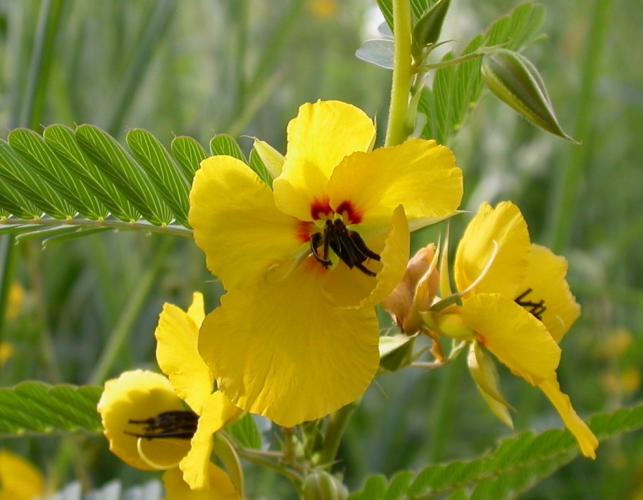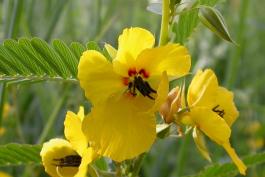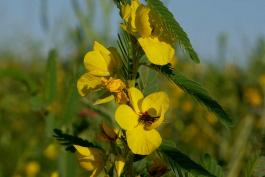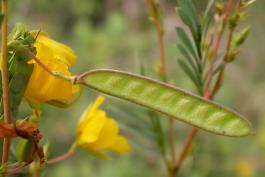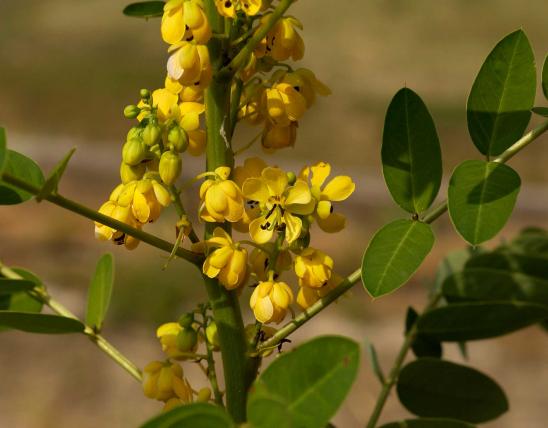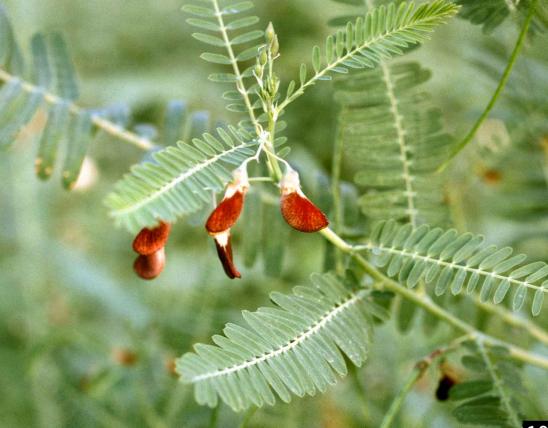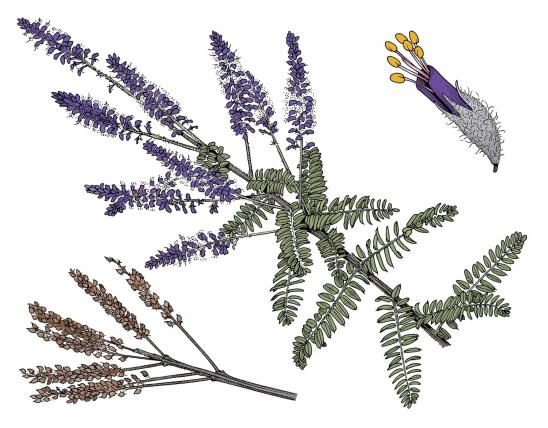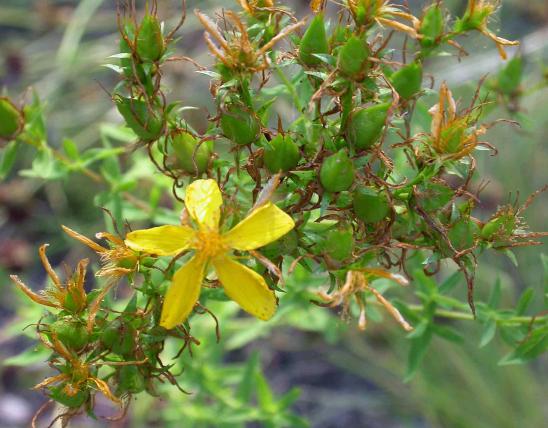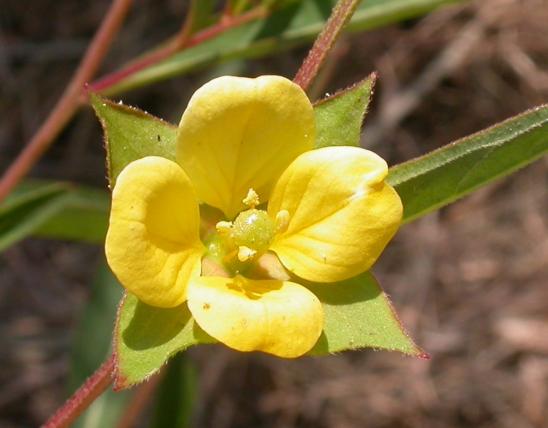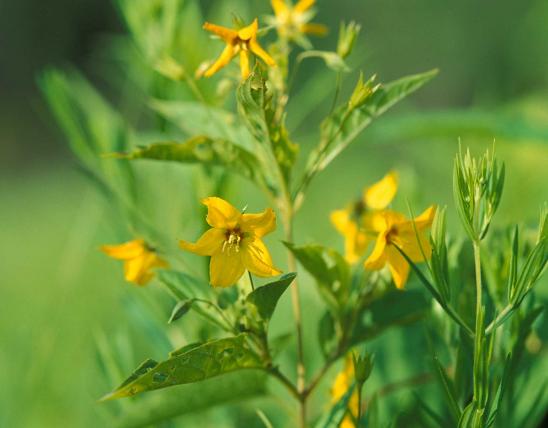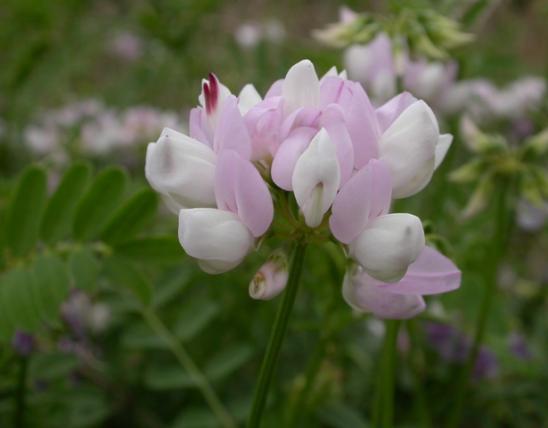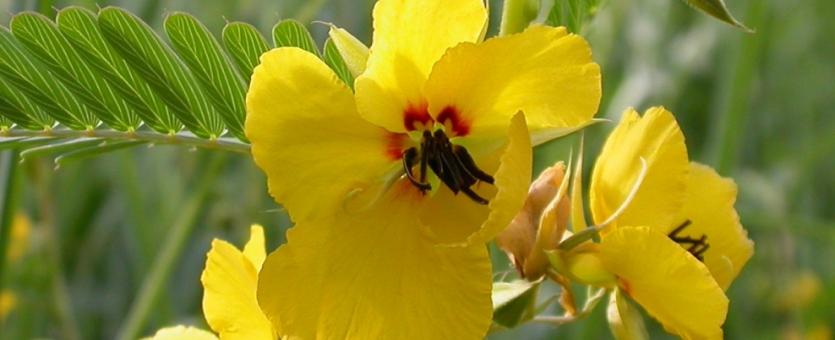
Showy partridge pea is an annual with upright stems, usually without branches. Flowers 1 to several, about 1 inch across, arising from leaf axils. Petals 5, yellow (rarely white), sometimes reddish-tinged at the base; one side petal curves around the stamens; the lowest petal is the largest. Blooms July–October. Leaves compound, pinnately divided, with up to 18 leaflets that are narrow, short, linear. Leaflets fold up along the midrib at night into a sleeping position, and often upon being touched. Fruit a legume (short beanlike pod) 1–2½ inches long, black when mature. When mature and dry, the two sides separate suddenly, flinging the seeds a yard or more away.
Similar species: Small-flowered, or sensitive partridge pea (C. nictitans) is about half as tall, branches a bit more, and has inconspicuous flowers no bigger than about ½ inch wide. It grows mostly south of the Missouri River.
Height: commonly to 2 feet, sometimes nearly 3 feet.
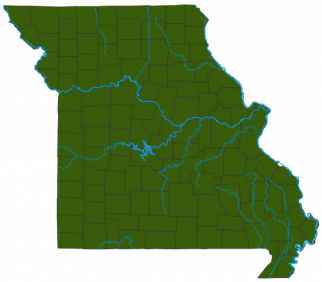
Scattered to common nearly statewide.
Habitat and Conservation
Occurs in fields, pastures, waste places, roadsides, and railroads, as well as glades, upland prairies, openings in upland forests, savannas, ledges and tops of bluffs, and banks of streams and rivers. Partridge pea is one of the most commonly seen roadside plants of early fall.
Status
Native Missouri wildflower.
Human Connections
Partridge pea is growing more popular as a native wildflower for gardening and naturalizing. It attracts pollinators, has attractive flowers and leaves, and requires little extra water.
The interesting flowers and their interactions with bumblebees have been a topic of research for biologists who study plant-insect interactions. This is a rich field of study; it requires knowledge of both botany and entomology, and it has applications for agriculture, horticulture, sustainability, and conservation.
Ecosystem Connections
Our two partridge pea species are important wildlife food plants and are sometimes planted for this purpose. Deer and livestock eat the nutritious foliage, though some compounds in the plant can cause digestive upset if too much is eaten. Quail, turkey, and other birds are fond of the seeds.
The special arrangement of flower parts encourages what is called "buzz pollination" by bumblebees, and ants visiting nectar glands in the leaf stems remove the plant’s insect pests.
Nyctinasty, the plant’s tendency to close up its leaflets at night, is thought to be an adaption to control water loss or afford protection from herbivores. Many members of the bean family exhibit this characteristic.
